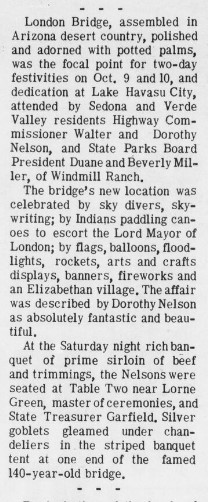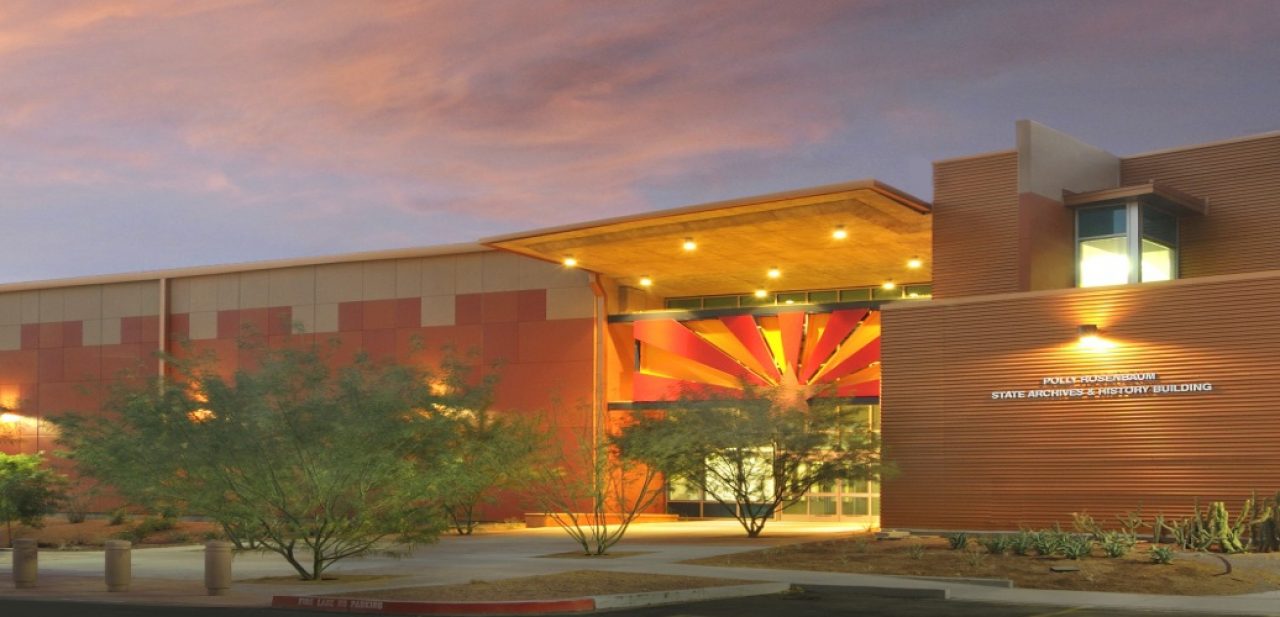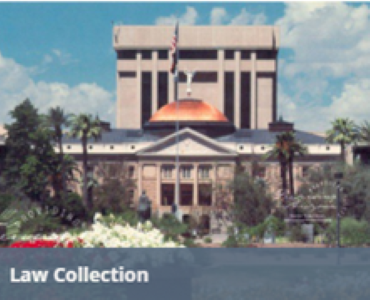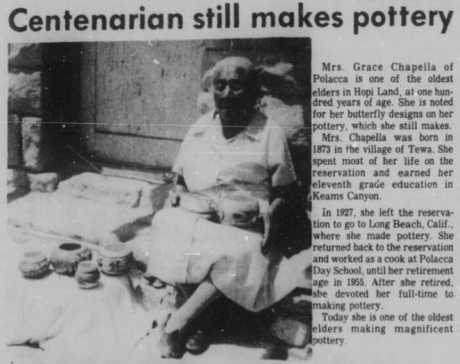Can you guess what Lake Havasu City and London have in common? If you guessed the London Bridge, you would be correct! After being built in 1831, the London Bridge began to collapse in the 1960s due to an increase in heavy vehicle traffic and rather than dismantling the bridge, London decided to try and sell the granite bridge and began looking for sellers in America. A chainsaw and boat engine entrepreneur from the Lake Havasu area, Robert McCulloch, would be the one to take them up on the offer despite the cost and potential downfalls.

History of Lake Havasu
Lake Havasu is located on the Pittsburg Peninsula along the Colorado River between San Bernandino County, California and Mohave County, Arizona. During World War II, the area was used by the Army Air Corps as a resting base called, “Site Six” and developed into an industrial area after the war. Robert McCulloch, a successful businessperson who founded the chainsaw and boat motor company McCulloch Properties Inc., bought the area around Site Six in 1963. Along with Cornelius Vanderbilt “C.V.” Wood, who was known for designing Disneyland Park in Anaheim, California, McCulloch planned to turn the arid desert area around Lake Havasu into a housing and tourist destination. After building a hotel and selling “sunny lots” to Midwesterners looking to retire to a warmer climate, the town began to grow slowly. By 1965, Lake Havasu City included attractions such as the Travel Trailer Park, Crazyhorse Campground, Lake Havasu Airport, State Beach, and Lake Havasu Marina.
The London Bridge
However, in 1962, another opportunity would arise around the world that would bring considerable economic success to Lake Havasu City: The nearly 140-year-old London Bridge was falling down. Since the bridge was built in 1831, the weight of increased automobile traffic was causing one half of London Bridge to sink. By the 1960s, one side of the bridge was four inches lower than the other and needed to be replaced. Rather than just tearing the bridge down, the City of London began looking for someone in America to buy the bridge. Robert McCulloch, looking for ways to attract more tourists, saw this as an economic opportunity and placed the winning bid of 2.4 million dollars to buy the bridge. However, buying the bridge was just the beginning as moving the bridge would bring additional challenges.

The bridge was dismantled brick by brick and all 10,276 bricks were numbered to put them back together once they arrived in Lake Havasu. You can even see some of the numbers on the bricks today. Afterwards, the pieces of the bridge were shipped from London, through the Panama Canel, and then up the Colorado River. The reassembly of the bridge was overseen by British architect Robert Beresford who decided to build the bridge dry ground with reinforced concrete core arches inside of the stonework. Underneath the bridge, channels were dug out after the bridge was completed to turn the Pittsburg Peninsula into an island and have water flow between the arches. All of this was completed in three years for the small cost of 7 million dollars, not including the original price of 2.4 million dollars to buy the bridge from London.

Economic Results
Despite the over 9-million-dollar cost of buying and transporting the London Bridge, Robert McCulloch’s wager on buying the London Bridge has paid off. The reconstruction of the London Bridge was completed on October 10, 1971, and celebrated over two days with, “…sky divers, sky writing; …canoes to escort the Lord Mayor of London; by flags, balloons, floodlights, rockets, arts and crafts displays, banners, fireworks and an Elizabethan village [and] a rich banquet” In addition, the Highway Commissioner Walter and Dorothy Nelson, State Parks Board President Duane and Beverly Miller, and the State Treasurer Garfield were at the ceremonies along with 50,000 American and British attendees.
Since then, the London Bridge has helped attract visitors from around the world and in 2020 alone, the city had 598,403 visitors to Lake Havasu and was the most visited state park in Arizona with the park having over 2,500,000 in revenue funding. In addition, the population rose from 4,000 people in 1970 to 15,000 only ten years later in 1980. The population has only continued to grow with a current population of around 58,000 and hopefully will continue to expand in years to come. No matter what though, for now the London Bridge is standing strong and did not fall down!

Want to Learn More?
London Bridge – Lake Havasu City (golakehavasu.com)
State Park Visitation – Tourism AZ
Arizona State Parks: the beginning | Arizona Memory Project (azlibrary.gov)
London Bridge | Arizona Memory Project (azlibrary.gov)
Lake Havasu State Park | Arizona Memory Project (azlibrary.gov)
Bridges | Arizona Memory Project (azlibrary.gov)



















